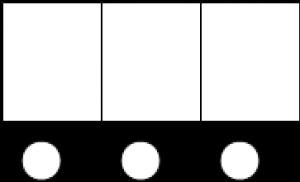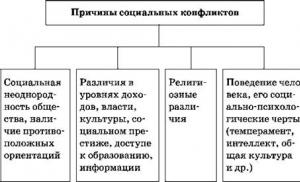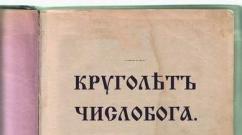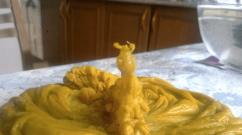What is the weight of the carat. What
Girls' best friends are diamonds. Not only ladies know this, but also many men who gave their beloved jewelry with this coveted stone. Questions regarding this precious crystal are of interest not only to the owners of it, but also to those who are just going to acquire a cute trifle decorated with a sparkling diamond. Curious how much a diamond is worth? This, perhaps, worries men who decided to please their darling. How many carats are there in a diamond? Well, this question worries many happy owners of a sparkling stone.
What is a diamond?
It's no secret that the most expensive mineral is diamond. This crystal not only has amazing aesthetic qualities, but is also the hardest substance on the planet. And it is the latter quality that is widely used in science and technology. A diamond that has been given a specific shape and cut is called a diamond.

How many grams are carat?
Before answering this question, let's turn to history and remember where the measure of carat came from. Measuring the weight of precious stones in carats began in the fifteenth and sixteenth centuries in Mediterranean countries. The fact is that precious minerals are small and weigh very little. At that time, accurate measuring instruments were rare. So, back in those days it was found that carob seeds (Ceratonia siliqua) have an unusually constant weight - 0.19 grams. Therefore, the weight of precious stones was compared with the weight of these seeds. And then the final answer to the question was already given: "How much is one carat?" This is a value equal to the weight of one grain of the miracle tree. And although now they do not use this method, but the term consonant has remained. Remained and the weight of a carat - 0.2 grams. This is the answer to the first question - how many grams are in karate.
How to find out the weight of a diamond without using a scale?
Perhaps not all diamond jewelry wearers know the weight of their stone. And if you really want to know? What to do? Can't pluck it out of a ring or earrings to weigh it? And not everyone has scales of such accuracy. There is an exit! The fact is that everything has long been measured and calculated. And if you want to know how many carats there are in your diamond, you just have to use this data. Naturally, it is worth remembering that the measurements will be approximate. From the table below you can find out, one carat is how much in terms of millimeters.

Determine the weight of a gem by its diameter. How many millimeters are carats?
It should be noted that this table is only suitable for round diamonds, the so-called Kr-57. If you have a stone of a different cut, then you can use the tables presented on sites selling jewelry.
Diameter of the stone, | |
Now you know how to determine how many carats your diamond is!
How not to get into a mess and not buy a fake?
Since people have learned to grow crystals artificially, buying a fake even in a good jewelry salon has become a real thing. Technology does not stand still, and sometimes the industry produces such copies of "a la diamonds" that even a specialist will not always be able to recognize a fake. A diamond in the A-cut (round shape) means special, with such a cut, it will be completely reflected by the back facets of the crystal, as if from a mirror surface. If you bring a stone with a crown to the light, then only a sparkling point will be visible. If a real diamond is dipped in hydrochloric acid, then it will not cause any harm to the stone, but stains will remain on the fake. Since diamond is a very tough mineral, it is almost impossible to scratch it. But a diamond easily leaves scratches on any other precious stones. A fake, if immersed in water or glycerin, will be very difficult to see, but a real stone will sparkle. You can also use testers based on the use of ultraviolet and electrical conductivity. But they are not able to detect mussanite - a rather rare crystal of the carbide class with a diamond luster. It is often passed off as a real diamond.
How much are diamonds worth?
The price of this precious mineral depends on many parameters: cut, transparency, presence or absence of inclusions and cracks, color and, of course, size. If a stone is ideal in terms of its transparency, then the price increases many times, while specimens with defects are much cheaper. In terms of color, diamonds are colorless, blue, pink, yellow, purple, brown and even black.

The most expensive ones are colorless and blue. are quite common, therefore they belong to a cheaper group. Obviously, large stones are much more expensive than small ones. Currently, they ask for 7-7.5 thousand rubles for a 0.1-carat diamond; 0.5 carats - 140 thousand rubles; 1 carat will cost 500 thousand rubles.
Largest diamond
The largest golden diamond belongs to. The weight of the stone is 755 carats. The second, no less beautiful stone, has the name Cullian I, its weight is 530.2 carats. This stone is kept in the Tower of London and is crowned with the scepter of King Edward VII. This diamond is just one small piece of a 3,106 carat (621.2 grams) diamond discovered in the Transvaal colony of Britain in 1905. This stone was split into two large, seven medium and ninety-six small diamonds.

The most faceted is in the shape of a pear and has the name "Star of Africa". In third place is a golden diamond bearing the name "Incomparable". The stone was given an unusual triangular shape. The mineral weighs 407.48 carats. A diamond is inserted into a necklace made of
In conclusion, I would like to add that not everyone can afford jewelry with large crystals. Therefore, often a diamond becomes valuable not from how many carats it contains, but from how much you have invested in a gift of love and attention. And even the smallest diamond can become the most expensive in the world!
What is Carat? For jewelers, this term has two meanings. One is used to indicate the content of precious metals in an alloy, the other is used as a unit of measurement for the weight of precious stones and pearls.
In Russia and in most European countries, a metric system for measuring the content of gold (and silver) in an alloy is adopted. It is extremely clear and understandable. One gram of a 925 test product will contain 0.925 grams of a noble metal and 0.075 grams of base metal impurities. Pure gold and silver will be 999 samples.
In the USA, Canada, Great Britain, in some countries of the Middle East, the carat system for measuring the content of the precious metal in the alloy is widespread. The system is duodecimal. Precious metal of 24 carats is considered absolutely pure. The fineness of 22 carats indicates that the product contains 22 parts of pure gold and 2 parts of impurities. Accordingly, a piece of jewelry with a 10-carat test will contain 10 parts of gold and 14 parts of impurities (ligatures).
Gold standard in carats
If the jewel is sampled:
- 9 carats - this means that the weight of gold or silver is 0.375 of the mass of the alloy;
- 12 carats - the weight of the precious metal is 0.500 of the weight of the alloy;
- 14 carats - the weight of the precious metal is 0.583 of the weight of the alloy;
- 15 carats - the weight of the precious metal is 0.625 of the weight of the alloy;
- 18 carats - the weight of the precious metal is 0.750 of the weight of the alloy;
- 22 carats - weight 0.916 of the alloy weight.
To convert carats to grams, you need the available sample, for example, divide 18 carats by 24 and multiply the result by 1000.
Jewelry of different carat sizes is popular in different countries. In the United States, 14 and 10-karat gold are common. In the countries of Southeast Asia, they love high-grade gold - 22 carats. And in Portugal there is a unique fineness - 19, 2 carats.

Compliance with metric and carat probing systems
To designate a sample, stamps are used containing the letter "K" after the value of the sample:
Brands like "12K", "15K" mean that the product is made of alloys 500 and 625 samples.
The abbreviation on the KGP stamp (stands for karat gold plated) indicates that the product is gilded. Therefore, if the ring bears the “18KGP” stamp, it means that the item is not gold, but gilded with 18-carat gold.
How many carats are there in diamonds and gems?
In English, different spelling of words helps not to get confused in carats. To determine the mass of stones, the word carat is used, for gold - karat.
Carat is a measure used to indicate the mass of precious stones and gems. It equals 200 milligrams (0.2 grams).
Sapphire, ruby and diamond of the same size will have different carats, as their density is different. If you put precious stones with the same weight of 1 carat next to it, then an emerald will look like the largest, followed by a diamond, and the smallest will be a ruby.
A diamond weighing more than one carat is considered large. Its diameter can be up to 0.5 cm. Diamonds weighing 5 carats are sold only at auctions. But stones weighing more than 25 carats get their own names.
The larger the gem, the more expensive its price. The largest diamond in the world has a weight of 545 carats.

Carat Diamonds
The weight of semi-precious stones is also measured in carats. But their weight does not so much affect the cost. Other factors play a role here: brightness of color, shape, cut.
To measure the mass of natural pearls, use grains. It is equal to a quarter of a carat. But no one measures rough stones in carats. Their weight is taken into account in grams.
It is interesting
In ancient times, carob seeds were called carats. They differed little in size, so they were used as a unit of measurement. In the past, there were very different standards of carat in different countries. In the Middle East, a carat weighed 204 milligrams in metric terms.
There was the so-called Arabic carat, it was equal to 223 mg.
And in Egypt, he weighed 195 mg. In Great Britain, until 1988, a carat weighed 205.4 mg, which differed from the standard carat in Europe. This fact drove the jewelers into despair.
The metric carat was officially adopted at the 1907 convention of metrologists. Not immediately, but most of the jewelers appreciated the new standard. Until 1914, it was accepted in most European countries, as well as in the United States and Japan. In 1922, carat was introduced into the USSR as a measure of weight.
You asked yourself: "How many grams are in karate?" Not everyone will answer this question. Perhaps a friend boasted of a 3-carat diamond ring and you don't know how to convert grams to carats, or are you just suffering to broaden your horizons? Then sit down comfortably and enjoy reading.
The word "carat" is familiar to many. At least, it is on hearing and first of all is associated with those very friends of girls - diamonds.
If you are not an expert in the field of precious stones and not a walking encyclopedia, then it is quite possible that in your mind the ideas about this concept are confused. This is often found, and this is due to the long history of the term, coming from the historical depths of the countries of the East.
First, you need to unambiguously define what, in fact, a carat is. Carat is a measure of weight, not size, shape, or even beauty. What is the weight of a carat?
At different times in different countries, the carat had certain values, ranging from 0.1 to 0.25 g, rounded. In 1907, the current number was established for him, equal to one fifth of a gram, or 200 mg. That is, 1 gram of stone equals 5 carats.
Is carat a diamond's best friend?
Often people, thinking about 1 carat - how many grams, think that we are talking only about diamonds. Is it so?
It turns out not, carat is a measure of weight for all gemstones.
And that is why the carat (that is, 0.2 grams of weight) of gemstones may differ in appearance. One carat of a diamond, emerald or sapphire looks different.
If we recall a little the course of school physics, namely that the density of substances differs, everything falls into place.
The same stones of 1 carat may differ in appearance, since there are more than 250 cutting methods.
Gram ratio - dimensions
In jewelry, there are tables of correspondence between carat weight and diamond size. Of course, given that they have the same cut. For example, a 1 carat round diamond has a diameter of 6.5 mm.
From which, by the way, we can conclude that such a diamond is considered a large stone.
2 diamonds of the same weight may differ in price. The fact is that the value of a gem also depends on clarity, cut and other factors.
Origin of the word
The origins of the word "carat" comes from the countries of the Middle East, famous for their love of jewelry, wealth and jewelry. In ancient times, in order to somehow compare stones with each other, jewelers were looking for a measure that was close to a universal one.
Of course, they found: it was the seeds of the carob tree, famous for the constancy of shape and size. And their weight was thus close to 200 mg. And this tree was called in Greek "keratonia".
It is easy to guess that this is where the similar sounding word "carat" came from.
But you must admit that for such valuable things as precious stones, I wanted more accuracy. Nobody could give one hundred percent guarantee of the identity of the seeds. This was the reason for the introduction of the "metric carat" into circulation.

The first option, which the Europeans came to in 1877, after consulting, said that a carat is 205 mg. "What kind of figure is this?" - a little later, other merchants and jewelers were outraged and suggested a more convenient value.
So, since 1907, after the passage of the IV General Conference on Weights and Measures, from now on and forever 1 carat has become equal to one-fiftieth of a gram. Gradually, the number of countries using the adopted measure increased. In the USSR, carat was introduced in 1922.
What are the letters?
For carat, its own abbreviation is used - "ct". For example, 0.5 ct - 0.5 ct. It is used when it comes to a single diamond. When considering the total mass of stones in a piece, the abbreviation "ct TW" is used.
Different carats are needed, different carats are important
I would like to note that the carat has a "brother" - a designation used to assess the purity of gold. But this is a separate topic.
At the beginning, we asked ourselves the question: "How many grams does 1 carat contain?" It turned out that converting carats to grams is quite simple. Carat is a measure of weight for all gemstones and weighs 0.2 grams. Accordingly, with different cuts, the appearance of the same stone may differ.
His carat is. However, many are accustomed to counting not only this indicator when calculating the cost. The same 1 carat diamond can be different for different shapes and sizes of the stone. So, for example, the terms “big” or “small” do not carry a semantic load, because weight, grams, carat, diameter and mass determine the weight and high cost. Linear dimensions are more often used to determine the length and width, therefore a separate value was introduced for the stone - the mass fraction and the size range relative to the shape.
What is Carat?
Jewelry is interesting and difficult, and not many people realize that a beautiful shiny stone is a laborious job. And this area has its own special terminology. Why is the weight of the stone not determined, but its carat calculated? It is a unit of measure for jewelry that makes up one fifth of the total weight of a stone. Let's say a diamond in 1 carat will be equal to the mass of 0.2 grams, and 1 gram of a gemstone will be 5 carats. The name of the measurement value comes from the name of carob seeds. In the research classification, Ceratonia Siliqua (Ceratonia follicle) even in the era of the Roman Empire served as a tool for establishing the mass of any small object.
Thus, they began to use hundredths to establish the exact size - a diamond weighing 40 acres. This means that a carat is 0.40 of a gemstone in the whole item. Nowadays, an electronic analytical balance is used to establish the exact size. They allow you to measure and measure up to thousandths of a carat. Only this method is applicable to stones that have not been processed by a jeweler. It turns out that in the "gold" business there is a more accurate technology for working with such values.
Calculation conventions
For convenient work with the weight and weight of diamonds, we entered values for the carat - it is 1 ct. It is an abbreviation for calculus, which is equal to 0.2 grams. There is a scale of 100 units, which provides for the appropriate divisions of grams to obtain whole carats. The technologist uses "high precision" for measuring, which is equal to 0.01 ct. The number is determined relatively, but for a cut and cut diamond, a different formula is used to take into account the shape and type of the stone.
The most popular cut of a round stone will be counted as a constant and the formula displays the value: height x diameter x 0.0061. The last number varies with the shape of the product. Sometimes, instead of the diameter, approximate length and width data are set (if the stone is not round). For a heart cut, let's say the height is exactly the same number as the width, and the last value is adjusted to 0.0059. Thus, for the "marquis" the proportion of data will be 2: 1 - value x length x height x 0.058. As you can see, formulas can be changed and supplemented if it makes sense to enter linear measurement data.
Calculating the share of value
To establish the mass, the jeweler uses linear technology and calculation methods. The formula is used: M (Kr-57) = D 2 x H x 0.0061 + correction. The D value will represent the diameter of the stone and the H value will represent its height. Therefore, speaking of mathematical residues, linear measurements are found in this art as well. For example, a 1 carat diamond needs to be measured to obtain diameter and height data. If its shape is round, then you need to amend the original data and those that will be received after. The type of cut is also important:
- Girdle thickness.
- Culet size.
- Primary processing.
- Major losses.
In practice, the correction can be up to 17% after visual inspection of the jewel. The buyer should understand that a 1-carat diamond ring will have approximate calculation data, since the error in the calculation methods also makes adjustments and corrections up to 9-10%.

Calculation of the diameter of the stone and the conclusion of the size range
For round stones only, there is a simplified method for calculating carat and weight. This can be done by setting the diameter. Despite the high error, the values are easy to read, established for diamonds of different shapes. Below is a table - the size of a 1 carat diamond in relation to its shape.
The table of carat diamonds by shape, weight and size is presented in an easy-to-read form for ordinary users. Those who are far from the methodology and essence of the calculation can use the given values when choosing a jewelry as a gift, for example, if you want to purchase earrings with 1 carat diamonds. It is also worth noting that a lot depends on the type and type of gemstone.
Change in mass relative to diameter

If we talk about the round shape, then it can also affect the indicators of periodic accuracy. For example, a 1 carat diamond can have different diameters, and grades often affect these bulge and density values. Below is another table with diamond weights and diameter values:
Note that the typical carat unit value has a different relative mass than what is stated in the jewelry store. Such a stone has additional tenths, and the usual weight changes - a 0.1 carat diamond will be more profitable in price than one that has a weight value of 1.01 carats. The diameter is 2 times larger, and the price is hundreds of times higher. Therefore, you should not immediately buy a carat stone, all the same, its value is higher by a hundredth, but it is better to take a closer look at those types that are accurate in size. For example, a 1 carat diamond, a photo of which is shown below.

Weight and transitional price of stone
Naturally, weight affects the value of a diamond. The trend establishes a proportional increase in price with a simultaneous increase in carat. But you need to take into account the linear size. The first table shows that all types and shapes of diamonds are different, as is their respective technical information. In connection with such adjustments, the concept of "transitional mass" was introduced. It is necessary to establish "jumps" in relation to the price of jewelry.
The stones of the following sizes have transitional masses:
- Stone 0.30 ct.
- Jewelry weighing 1 carat.
- One and a half carats of stone.
- 2-3 ct diamonds.
These are the most popular sizes, so the demand for them is higher, as evidenced by the variable price. Nobody will change the price of a 15-carat diamond jewelry, since it is a luxury product.
Cost of stones
You can name the relative value of stones depending on the brand of the store that sells them. For example, in 0.99 carat the price will be equal to 17,000 dollars, and in 1 carat - already 29,100 dollars. That is, the transitional diamond size affects the value, which can increase by 70% immediately from the 0.01 carat weight gain.

The hanging feature is also taken into account - this means that the diamond weighs more than it seems visually. Such stones are called stretched. It was said above that the density of the stone also affects the cost, and here we are talking about just that. For example, a 1 carat diamond is 6.5 mm in diameter according to the table. Its weight corresponds to the parameters, but the diameter is much smaller, taking into account the correct cut - only 6.3 mm. This is a violation of the proportions of the standards, and such stones are sold at a discount.
Hence the conclusion that the cost is more influenced not by the mass, but by the diameter, and its compliance with the rest of the measurements. In terms of beauty, the stone loses in price compared to stones of the correct shape. And already, instead of tens of thousands of dollars, they will give about 8000-9000 dollars for it. This is approximately 500,000 per 1 carat of a diamond (price in rubles).
Weight difference

It is worth knowing that a 0.8 carat stone will be more expensive than two 0.4 carat stones of the same quality. Naturally, because large diamonds are very rare, and the reason lies in the analogy of the final weight. Distinguish between the values of the weight and the total weight of the stone, they are displayed as follows: t.c.w or ctw and ct. The total weight is indicated in jewelry stores as an average, and the specific weight is for each item separately.
For example, if a product has several stones, then the total weight is 2 t.c.w. The stones weigh 1 ct separately and the other two weigh 0.5 ct. The total weight may also vary depending on the color, clarity and cut of the item.
Mass fraction of stones and their price
There are diamonds that weigh less than 0.01 carats. If the weighing error is taken into account, the diameter cannot be calculated. They are recognized as crumbs. The rest of the stones are divided into:
- Small, weighing up to 0.299 carats.
- Medium with a weight of 0.3 to 0.99 carats.
- Large - from 1 carat and above.
Pricing for large stones takes clarity and color into account rather than diameter. The same stones in all respects, but different in color, can differ in value by tens of thousands of dollars. For small stones, the clarity characteristics are not taken into account, since they are invisible and do not affect the appearance.

Any appraisal examination is carried out according to the "Tavernier rule", and weight is in the first place. Next, the squares of the mass in each carat are considered, and the whole value is multiplied by the base price per ct.
In any area of trade, you need a standard - a benchmark that will be a universal way of assessing the value of a particular thing. It is a specific measure of weight or volume, as well as a quality standard. In the jewelry industry, where metals are sold in small quantities, stones are completely microscopic, even a layer of sputtering of particles of a noble metal is appreciated, there has always been a need for its own measure of weight. Carat has firmly entered the life of people, measuring the mass of gold in grams, or the purity and volume of precious stones. Gold is one of the most demanded metals, it is used as an indicator of the country's wealth, regulates trading on the stock exchange, is used in industry and gives joy to jewelry owners. Specialists - gold miners, sales intermediaries, stock brokers, jewelers and their assistants - know how to determine the volume of gold, its quality and value using this measure. Just a few tips will help you figure out and finally figure out how many grams are in your gold product, if its fineness is indicated in the karate of gold, where this measurement system came from and how to apply it.
History of karat
Carat is not an element of a system of measures and weights, therefore it is called non-systemic. The name comes from the carob Ceratonia siliqua. It is an evergreen tree that has long been common in the Mediterranean. It gave fruits - pods, which always corresponded to one another in weight and volume. Noticing this feature, people began to use its pods as a standard of weight since biblical times. During the Roman Empire, mature dry pods were introduced into the system of measures, one unit was equal to 0.19 grams and was called silica. Carat is only the Greek version of this name, which came into use later.

There are many varieties of karat that are similar in nature, but offer different numerical equivalents. A metric carat is 0.2 grams. In the Middle East and North Africa, kirat was used - the so-called Arabic carat, which was measured in milligrams and had an approximate value (from 195 to 223 mg). English carat is also an indicator in milligrams, it equals 205 mg. Egypt has always had its own measures for measurements. Their carat is measured in fractions of faddan and kadakh, and was approximately 0.064 liters or just over 175 sq. meters. These measures do not apply to precious metals and stones.
Metal and alloys
A very important parameter of the metal is the purity of the gold. To be sure of the quality of the metal, you should consider the special markings on the product. It is this parameter that allows you to determine the degree of purity of the alloy. One carat here is one fraction of 24 pure substance in that particular ingot, coin, or other product. 
There are many alloys of gold and this rather necessitates, because gold itself is a very soft metal, it does not hold its shape and is easily deformed. Over the many years of development of the jewelry field, traditional variants of alloys have appeared that do not cause allergies in humans, make the metal resistant and keep its shape well, and give a beautiful shade. Very often silver and copper are used for alloys. For non-ferrous metals - white, green, black, rose gold, additional tint additives are also used. To understand how valuable an item of precious metal is, you need to know not only its weight and type of gold, but also the fineness, which can be measured in numerical value or carats. A numerical value can more accurately describe the percentage of pure gold (for example, 24 carats are equal to 999 fineness). In the United States, the fineness of gold is more often indicated in carats, while in Europe metric markings are preferred.
Weight and numbers
Despite all the intricacies of measurements, I would like to know how many grams are usual, familiar to our person, in a gold piece. So, let's start with the metric carat. It was first used in Spain. This is a weight equal to ⅕ gram, or 0.2 grams, or 200 mg. The tradition of medieval measurements is continued here, the only difference is in the more accurate figure of the standard.
Now the British carat system is used to denote the purity of gold samples. With its help, you can find out the percentage of gold content and the percentage of impurities. The number 24, which is the maximum and corresponds to 100%, is easily divided in half and into other equal shares. So, 12 carats - 50% pure gold, 6 carats - 25%, 18 carats - 75%. For other numbers, the percentage of 1 carat - 4.2% will help.
Sample purity
Samples can be converted to the carat system. The purest fineness used in jewelry is 958. It corresponds to 23 carats. Impurities are necessary here to change the properties of the material towards greater strength. 22 carats is 917 fineness, also fairly clean. 18 carats or 750 carat is a traditional type of alloy that allows you to create a balanced alloy with other metals. It is this numerical indicator that can be called optimal. 14 ct - 585 gold. It is very common both in Russia and in Europe. Due to the large percentage of impurities, it can get the original shade, and also has sufficient hardness for various jewelry manipulations - twisting, stretching, straightening to the state of a sheet. 10 carats is 416 standard, and just over 40% pure gold. This is the lowest metal purity bar in the United States. In Russia, 375 fineness of 9 carats is also acceptable. In the East, markings of 8 carats are also used, containing 33.3% gold. To convert gold in carats and convert it to the metric system, the table below can be useful:

Ounce
For trading on the exchange, a troy ounce is used, which is a fairly accurate measure of measurement. Do not confuse it with those previously described. Troy ounce corresponds only to pure gold, with a purity index of 999 or more. It indicates the weight of the metal, and in accordance with this helps to find out its price on the world market. By weight, it is approximately 31.103 grams. If you buy investment coins, bullion or virtual volume of gold through a bank or exchange, you will come across exactly this value, which is denoted as ozt.

What should you pay attention to?
Purchasing high purity carat gold is the smartest investment. If necessary, you can sell the ring or chain for a higher price, since the value of gold has not been falling for many years.
On the other hand, for those who value the aesthetic component above all, without intending to invest in jewelry, numerous alloys may be suitable. The use of non-ferrous metal will allow you to create uniquely beautiful floral or fantasy compositions.
The strength of the alloys will allow making the finest faceting of the product and decorating it with filigree carvings. A combination of pink or green gold with a similar gemstone shade looks very beautiful. In any case, when purchasing a thing from a jeweler, find out about the content of precious metals, the quality of stones, the percentage of pure gold that make up the alloy. So you can be sure that you were not mistaken with your purchase.













